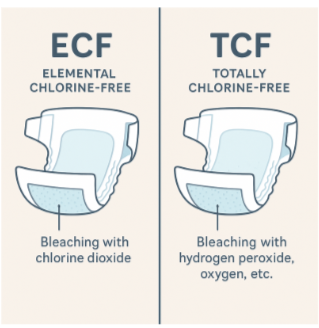Let’s Be Real: Disposable Diapering Isn’t Perfect — But It Can Be Cleaner
- stephaniehorna
- Jul 8
- 3 min read
Updated: Jul 22
Diapering Essentials
As parents, we all want to avoid exposing our babies to harmful chemicals — and in an ideal world, we’d use only clean, non-synthetic materials. But when it comes to diapers, here’s the reality check:
Every disposable diaper contains some level of plastic and synthetic material. Why? Because they need to absorb quickly, stay dry, and not leak. So perfection isn’t the goal — informed, better choices are.

Also, no diaper is fully biodegradable (as per FTC rules) and the FDA doesn't require the disclosure of every chemical in use.
-> That’s where I come in. I’ve researched dozens of diaper brands to help you:
✔ Avoid the worst offenders
✔ Understand what certifications actually mean
✔ Prioritize the materials and ingredients that matter most
✔ Choose options that balance safety and cost
🔍 What to Look For
Full ingredient transparency — avoid buzzwords like “natural” or “eco” without specifics
Chlorine free pulp Bleaching process: TCF (Totally Chlorine-Free) is preferred, though modern ECF (Elemental Chlorine-Free) is also considered safe

Chlorine- free Bleach processes: Believe it or not there's ongoing debate as to which one is superior. With modern methods both are deemed safe, although parents tend to prefer TCF for peace of mind. Safe and breathable materials : prioritize organic cotton or sustainably sourced bamboo over synthetic plastics touching baby's skin. Look for a non-abrasive topsheet (the part touching your baby's private parts) to minimize chafing or rashes
Third-party certifications for an official stamp of approval
- EWG Verified: Meets strict criteria for ingredient safety
- OEKO-TEX Standard 100: Screens textiles for harmful substances
- Nordic Swan: Evaluates environmental and health impact
- FSC Certified: Ensures pulp used in diapers is from responsibly managed forests

Third Party certifications that focus on both safety of materials and ingredients
❌ What to Avoid at All Costs
Fragrance/Parfum: May contain phthalates and allergens
Lotion/Petroleum-Based Additives: Can disrupt baby’s skin barrier
Dyes and Inks (especially in inner lining or core)
Phthalates: Known hormone disruptors
Chlorine-Bleached Materials (non-TCF/ECF)
PFAS (forever chemicals): Sometimes found in “leak-proof” layers
Reminder: A baby’s skin is 20–30% thinner and more absorbent than adult skin. Materials and ingredients matter more than you think.
Key takeaway: At the end of the day, the biggest factor in choosing a truly clean diaper is what’s not in it.
If a diaper avoids:
Fragrances or parfum
Lotions and petroleum-based additives
Chlorine-bleached pulp
Phthalates
Inks and dyes near baby’s skin
PFAS or other fluorinated compounds
…then you’re already making a significantly safer choice for your baby.
Certifications, materials, and brand promises are helpful, but they’re secondary to this core truth:👉 Fewer harmful ingredients = fewer risks for your baby’s delicate skin.
👀 Ready to See the Cleanest Diapers?
I’ve done the digging so you don’t have to.
Explore the safest diaper brands I trust — including my top 3 picks by price, ingredients, and performance.
✅ Transparent materials✅ No hidden toxins✅ Budget breakdowns included







Comments